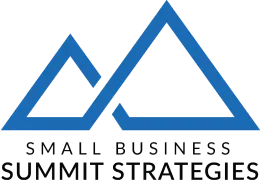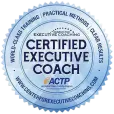
Meetings That Matter
“In the operations of war, where there are in the field a thousand swift chariots, as many heavy chariots, and a hundred thousand mail-clad soldiers, with provisions enough to carry them a thousand li, the expenditure at home and at the front… will reach the total of a thousand ounces of silver per day.”
Sun Tzu reminds us that in war—and in business—resources are finite. Every decision comes at a cost, and nowhere is this more evident than in how we spend our time. Meetings are one of the most significant yet often overlooked costs in small businesses. Handled poorly, they drain money, energy, and focus. Handled well, they can align your team, spark creativity, and drive results.
Imagine this: You call a one-hour meeting with five employees. If the average hourly wage is $25, that meeting costs $125 in payroll alone. Over a year, those weekly meetings add up to $6,500. But what about the opportunity cost? What could those five hours every week accomplish if spent on tasks that directly improve customer service, solve problems, or drive sales?
Meetings aren’t inherently bad—they’re necessary. But to make them worth the cost, they have to be intentional, focused, and productive. As Sun Tzu might put it, “The wise leader anticipates waste and organizes to prevent it.” Done right, meetings can be a tool to move your business forward instead of holding it back.
Every Meeting Comes at a Price
Meetings aren’t free. Beyond the obvious cost of wages, they consume energy, morale, and focus. Poorly run meetings waste more than time—they leave your team feeling frustrated and unproductive.
The Costs of Unproductive Meetings:
- Financial Costs: The direct payroll expense for attendees. Even a 30-minute meeting with 10 participants can cost hundreds of dollars.
- Opportunity Costs: Every hour spent in an unnecessary meeting is an hour not spent on revenue-generating activities, solving problems, or improving customer experience.
- Energy Costs: Unfocused or irrelevant meetings drain team morale and creativity, leaving employees less motivated to tackle their work.
Example: At Hearthstone Café, the weekly all-staff meeting was supposed to keep everyone informed, but it rarely delivered value. The meetings ran for an hour and often covered updates that could have been handled through a quick email. Employees left feeling frustrated, and tasks piled up. When the owner switched to sending updates via email and reserved meetings for collaboration and problem-solving, the team saved over 20 hours a month. That time was reinvested into streamlining service, which directly improved customer satisfaction.
Challenge: Look at your meeting schedule for the past month. How many hours did your team spend in meetings? Were all of those meetings necessary? Identify one or two you can eliminate or replace with email updates.
How to Decide When to Meet and When to Email
Not every issue requires a meeting. One of the simplest ways to reclaim time is to be intentional about when you gather your team and when you don’t.
Sun Tzu wrote, “He will win who knows when to fight and when not to fight.” The same applies to meetings—knowing when they’re essential and when they’re not is a strategic advantage.
Questions to Ask Before Scheduling a Meeting:
- What’s the Purpose? Are you sharing updates, brainstorming, solving a problem, or making a decision? If it’s just about sharing information, email or a shared document may be more efficient.
- Who Needs to Be Involved? If the issue only affects one or two people, handle it with a quick one-on-one conversation. Keep meetings small and focused to maximize efficiency.
- Is This Time-Sensitive? If something requires immediate alignment or action, a short meeting might save time compared to a lengthy back-and-forth via email.
Guidelines for Communication Tools:
- Use email or shared documents for:
- Non-urgent updates.
- Data sharing or reference materials.
- Follow-ups or reminders.
- Use one-on-one conversations for:
- Delegating tasks or addressing performance issues.
- Personalized coaching or mentoring.
- Use team meetings for:
- Brainstorming and creative problem-solving.
- Decisions requiring multiple perspectives.
- Strategic alignment on major initiatives.
When Email Falls Short:
While email is great for efficiency, it’s not always the best tool.
- Complex Issues: Email threads can quickly spiral into confusion when the topic is nuanced or requires back-and-forth input.
- Tone and Meaning: Emails are easy to misinterpret, especially when the topic is emotionally charged. Negativity bias—the tendency to assume the worst—can turn a neutral message into a perceived slight.
Example: A manager at Flex & Flow tried to address staff concerns about a new scheduling system through email. The message was misinterpreted, leading to frustration and resistance. Realizing the mistake, the manager called a short meeting to explain the changes face-to-face. Seeing the manager’s tone and hearing their reasoning helped the team understand the decision and feel more engaged.
Pro Tip: If tone or emotion could be misunderstood, consider a face-to-face meeting or recording a video message. Video can be especially helpful for asynchronous teams or virtual assistants in different time zones.
Challenge: For the next month, evaluate every meeting you schedule. Can it be handled through email, a shared document, or a one-on-one conversation? Track how much time you save.
Make Every Meeting Count
Some meetings are essential, but they must be planned with purpose. There’s no one-size-fits-all approach—your meeting structure should align with its goals and your team’s needs.
As Sun Tzu reminds us, “Plan for what is difficult while it is easy, and do what is great while it is small.” Thoughtful preparation turns meetings into powerful tools.
General Principles for Productive Meetings:
- Set Clear Objectives: Define what you want to achieve. Are you brainstorming, solving a problem, or aligning on a strategy? Share the purpose and agenda in advance.
- Invite the Right People: Keep the group small and focused—only invite those who genuinely need to participate.
- Assign Roles: Have a facilitator to guide the discussion, a timekeeper to manage pacing, and a note-taker to capture action items.
- Stay Flexible When Needed: For brainstorming sessions or creative problem-solving, a rigid agenda may stifle progress. Be prepared to adjust based on the needs of the discussion.
- End With Action: Summarize decisions, assign tasks, and set deadlines before the meeting ends.
Example: At Maple Valley Inn, weekly tactical meetings followed a clear agenda, but the owner allowed discussions to flow naturally during brainstorming sessions. This balance of structure and flexibility helped the team solve problems effectively while ensuring meetings stayed productive.
Challenge: Experiment with these guidelines in your next meeting. Afterward, reflect on what worked, what didn’t, and what changes you can make to improve.
When a Meeting Adds Real Value
Meetings are worth the investment when they:
- Foster Relationships: Regular interactions build trust and collaboration.
- Provide Clarity: Complex initiatives often require live discussions to ensure alignment.
- Solve Problems: Some challenges are best tackled with live brainstorming and group input.
Example: At Turning Pages, a half-day strategy session for their Local Author Festival led to innovative ideas like themed readings and partnerships with local businesses. The meeting energized the team and resulted in one of the store’s most successful events.
Turn Meetings into Results
A meeting is usually only successful if it leads to action. To ensure follow-through:
- Document Decisions: Summarize key takeaways and share them immediately.
- Assign Ownership: Delegate tasks, set deadlines, and define expectations.
- Follow Up: Track progress in future meetings or one-on-one check-ins.
Challenge: At the end of your next meeting, create a shared document listing all action items, deadlines, and responsibilities. Review it weekly to ensure progress.
Build a Culture of Helpful Meetings
When meetings are intentional, they respect your team’s time and energy. They become tools for progress, not roadblocks.
Sun Tzu’s wisdom reminds us, “Victory comes from finding opportunities in problems.” Thoughtful meetings uncover these opportunities by aligning your team, fostering collaboration, and driving meaningful results.
Your Next Steps:
- Audit your meeting schedule. Eliminate unnecessary ones.
- Experiment with a meeting framework from this article.
- Ask your team how meetings can better support their work.
With intention and structure, meetings can energize your business and help you build something that lasts.




